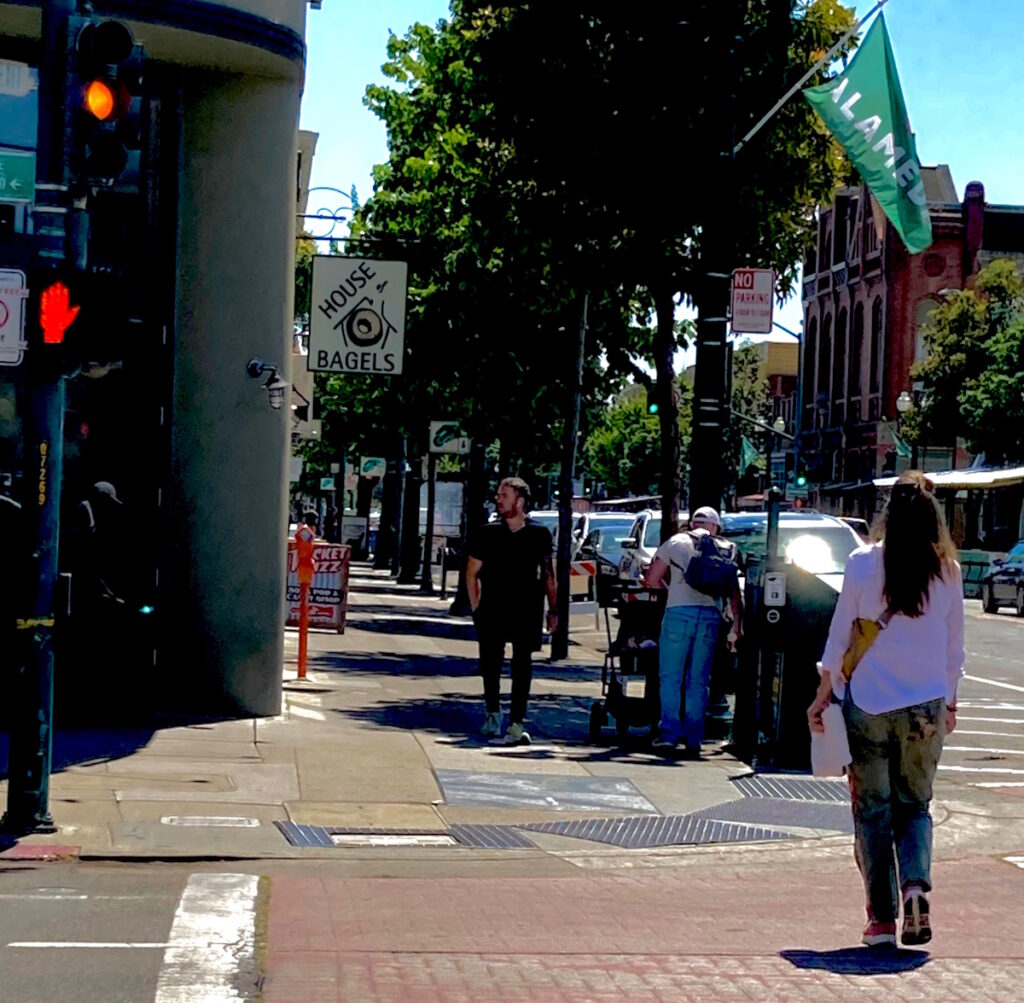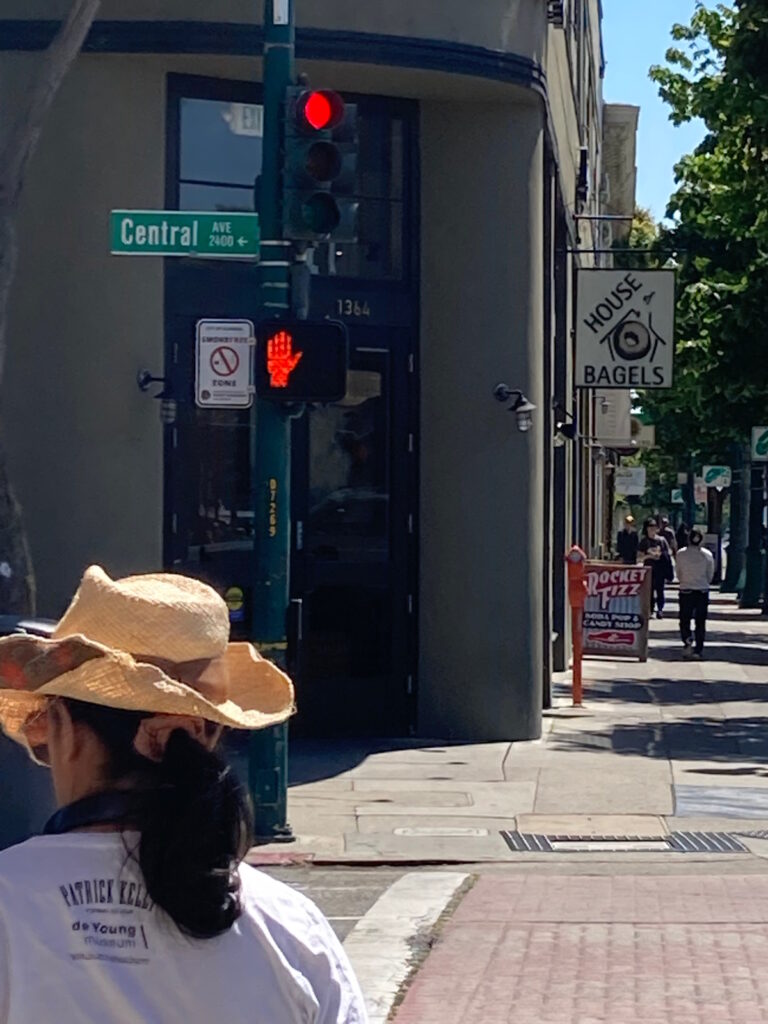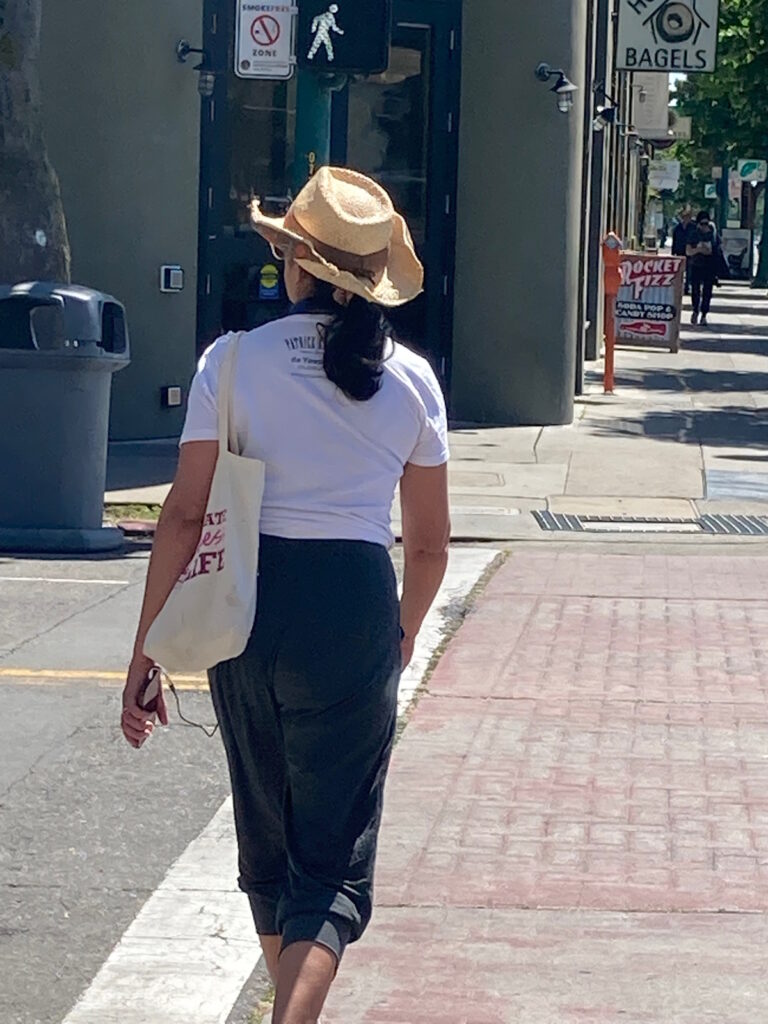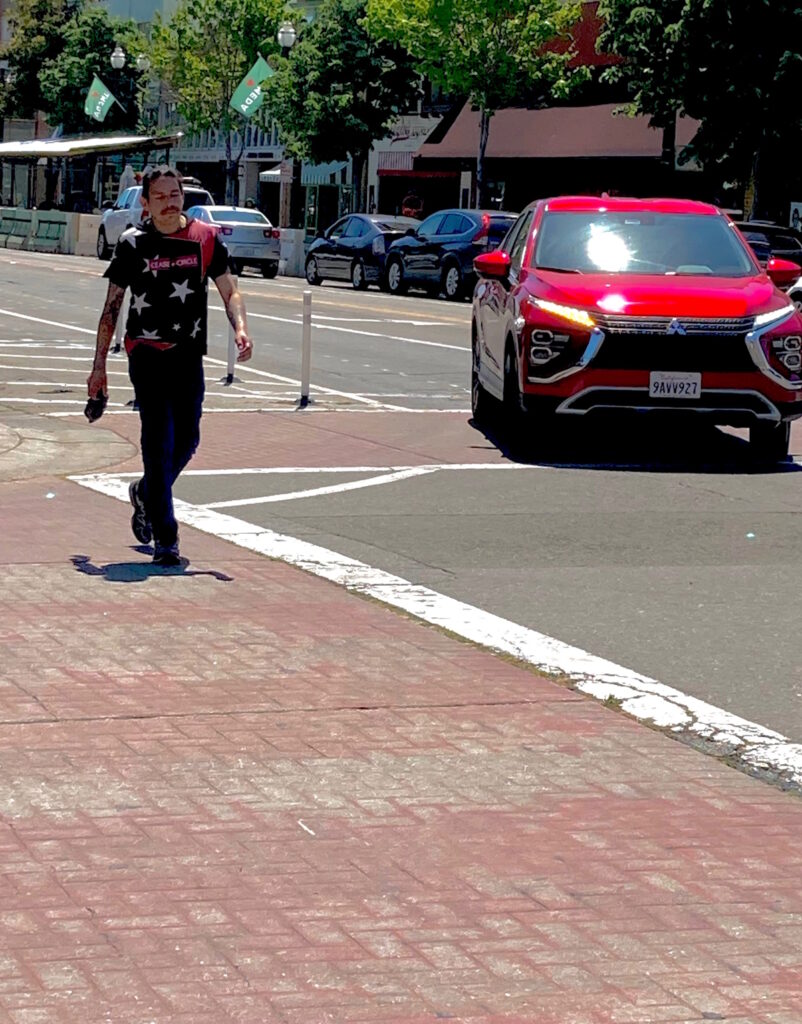Pedestrians Have More ‘Dominion Of The Road’ Than Vehicles, But Ultimately Hold Their Fate In Their Feet and Heads

TO HEAR THE FULL INTERVIEW, CLICK ON SOUNDBAR AT END OF STORY
Text and Photos preceding full audio interview by Larry Freeman
The flip side of “bad driving” in and around Alameda, (covered in our previous audio interview with Chief Joshi) is “bad walking” when it comes to those of us who trade wheels for our feet during transit.

In this interview, tenth in ANN’s podcast series with Chief Joshi, we explore the rights, risks, and precautions pedestrians, the most vulnerable of travelers on the streets.
There are a number of ‘steps’ pedestrians ought to take for their safety, but many times don’t, as they amble or lurch along on foot power into transit corridors used by cars and other wheeled modes of transport.
“Rules of the road,” as they are called, apply substantially to pedestrians as well as others who must share the road, but don’t always.
“The law applies all the way around to everyone who is out on the road,” Joshi notes, emphasizing that pedestrians, whether we like it or not, have a responsibility to comply with the rights – or “dominion of the intersection,” as he terms it when it comes to dealing with motor vehicles, bicycles, traffic lights and signs and so on.
A twenty minute, midday observation of the usually busy Park Street and Central Ave intersection –in a proximity where over seven collisions have taken place so far this year (APD does not filter pedestrian strikes, a type of collision, from vehicular) — showed that over sixty pedestrians were generally mindful of their responsibilities to heed the traffic lights before entering the crosswalks.
For the most part they stayed put when the insistent red hand on the pedestrian signal told them to hold up, most entered briskly when the white walk man symbol came on, and only a few rushed to make it across in time, generally successfully when the flashing red hand, the equivalent of the ‘yellow light’ for vehicles, took ownership.



This three step, of sorts, shows a person first pushing the walk button while her light signaled ‘do not enter’, then moving out into the red stopped crosswalk before thinking twice and stepping back, and then entering when she had the right of way. Note how she looks left, knowing that a cross walk go ahead signal would provide no physical protection against a distracted or dangerous driver.
But on plenty of other occasions, in lots of places with and without crosswalks, folks just plow on into the roadway oblivious, defiant or indifferent to who has the right of way, almost as if thinking “I dare you to hit me,” and gambling on the driver’s capacity or observance.
At the intersection of Santa Clara and High, not long after the Park Street observation, one of two women, each with a pooch in tow, remarked, “No one pushed the (pedestrian light control) button” before they all strode straight forward into the crosswalk towards Lincoln Park, defiant of the blazing, static red hand, the pedestrian’s equivalent of a stop sign.
The foursome caused a car –behind them and over their right shoulders (or haunches,) — to jerk to a halt as it was making a left turn before the quartet bolted into the crosswalk and the car’s path . Had the driver not seen them first, things could have turned out to be no walk in the park.
The law is clear that pedestrians are prohibited from just marching out against the foreboding (or annoying) red hand, even though the car had the green light.
While the new and highly simplified DMV Driver’s Handbook is largely mum on pedestrian responsibilities, California Vehicle Code section 21950 (b) states, in part, that “No pedestrian may suddenly leave a curb or other place of safety and walk or run into the path of a vehicle that is so close as to constitute an immediate hazard.”
Had a collision occurred, Chief Joshi notes, APD would have to undertake an investigation to determine fault, and all involved parties would have to remain at the scene.
“Pedestrians should be aware of their surroundings.”
Chief Joshi
While vehicles have the largest share of responsibility to exercise “all due care” to yield to pedestrians, those who walk also have the same duty for their own safety.
In an era fraught with cell phone screen, ear bud fixated persons who are in some other zone than a roadway, or for those who do not look around at much of anything at all before entering into the intersection, things can become riskier.
Chief Joshi recommends that all pedestrians, even when they have the absolute, incontestable right of way literally look out for their own wellbeing.
“I think that pedestrians should be aware of their surroundings,” recalling that he was taught, as a young child to “look left/look right” (something he drills into his youngsters), and that’s going to help you.”
“Self preservation” is key, given the gray areas of the law in certain circumstances he said, and the fact that the pedestrian almost always comes out on the losing end of person/car contact emphasizes that more elemental rule of the road.

‘Red Right Rollers’ , especially in intersections with only stop signs , pose a special hazard to unassuming pedestrians or bicyclists who enter crosswalks obliviously suddenly or at speed.
“I think that sometimes motorists are driving carelessly too, when they’re not paying attention, not using a hands free feature of their cell phones (and) we all know that exists out there. It’s a good idea to pay attention.”
When it comes to the self induced oblivion of pedestrians glued to their devices, “that’s something that can be a contributing factor” in terms of trying to piece together the pieces as to who was at fault, he said.
So with respect to who has the burden of responsibility to insure pedestrian safety, consider the words of two local passers by on Park Street that day.
Mark in no uncertain terms made it clear as to who would be to blame if car and person met in an undesired or tragic way. “The driver has the responsibility to insure pedestrian safety,” he asserted.
Lorraine, his companion, bicycle in tow after the two had crossed the street let it be known, in no uncertain terms that, “I think it’s ultimately the responsibility of the cyclist or the pedestrian to look out for their safety.”
The two shared a smile and tacitly agreed to disagree on the matter, begging the point that if it takes two to tango, it takes two to maximize the safety and well being of driver and walker alike.
TO LISTEN TO THE ENTIRE INTERVIEW, CLICK SOUNDBAR BELOW:

